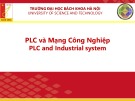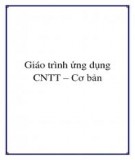
57
HNUE JOURNAL OF SCIENCE
Natural Sciences 2024, Volume 69, Issue 3, pp. 57-66
This paper is available online at http://hnuejs.edu.vn/ns
DOI: 10.18173/2354-1059.2024-0035
THE SOLUTION TO THE PROJECT SCHEDULING PROBLEM
BY USING AN IMPROVED GENETIC ALGORITHM
Do Ba Chin1, Tran Truc Mai2, Dang Quoc Huu3,* and Nguyen The Loc1
1Faculty of Information Technology, Hanoi National University of Education,
Hanoi city, Vietnam
2Faculty of Information Technology, VNU University of Engineering and Technology,
Hanoi city, Vietnam
3Faculty of Economic Information System and E-commerce, Thuong Mai University,
Hanoi city, Vietnam
*Corresponding author: Dang Quoc Huu, e-mail: huudq@tmu.edu.vn
Received September 25, 2024. Revised October 24, 2024. Accepted October 31, 2024.
Abstract. Nowadays, managing and allocating resources for projects has become
increasingly essential for managers. A critical factor affecting the success of a project
is the work assignment plan for workers to optimize the completion time. Current
solutions to project scheduling problems have not been thoroughly addressed; thus,
in this study, we model the labor assignment process in project production as a
scheduling problem. To solve this problem, we use an improved genetic algorithm
named GA-RT (Genetic Algorithm with Random Crossover and Negative
Tournament Selection) and conduct experiments on the iMOPSE standard dataset.
Experimental results show that the proposed GA-RT algorithm can effectively solve
the project scheduling problem, achieving better performance compared to
existing algorithms.
Keywords: project scheduling, scheduling problem, genetic algorithm.
1. Introduction
In industrial production, scheduling workers to perform tasks (Figure 1) is an
essential issue. Optimizing the time to complete a product helps save project production
time. The plan to assign tasks to workers, ensuring that the priority of tasks and the goal
of completing the task in the shortest time are satisfied, is called a schedule. In reality,
any task can be performed by several workers with corresponding expertise; a more
skilled worker can complete the task earlier. Additionally, some tasks can only start when
the previous tasks are completed. From the above practical problem, a suitable problem
model is needed to find the optimal solution.

Do BC, Tran TM, Dang QH* & Nguyen TL
58
The Real-Resource Constrained Project Scheduling Problem (Real-RCPSP) [1] is a
project scheduling problem extended from the original Multi-Skill RCPSP (MS-RCPSP)
problem [2]-[5] to schedule projects with limited resources and multiple skills. Real-
RCPSP adds constraints on resources based on the skill level required by the task; if the
resource performing the task has a higher skill level than required, the task execution can
be faster [1]. MS-RCPSP has been proven to be an NP-Hard problem [2], [6], [7], and
many studies [4], [8], [9] have utilized Genetic Algorithms [10] to address this problem,
including contributions from several research groups.
Myszkowski et al. [8], [9] built and published the iMOPSE standard dataset [8] to
replace the PSPLIB dataset [11], adding an information field on task execution costs. The
iMOPSE dataset has been recognized and widely used in subsequent publications, along
with the GA Runner toolkit to run and verify the results of the MS-RCPSP problem.
The Hosseinian group [4], [12], with research results published [10], used the
classical GA algorithm combined with the Shannon-entropy information measure-based
decision-making method to select individuals for the next generation to solve the Multi-
Mode Multi-Skilled RCPSP problem (MMS-RCPSP), a variant of the MS-RCPSP
problem that adds a regime constraint and cannot be changed once the execution process starts.
In studies [5], [13], this group of authors used the Dandelion Algorithm to solve the
MS-RCPSP problem [13] and the Pareto-based Grey Wolf Optimizer algorithm for the
multi-objective MS-RCPSP problem with two objective functions: project
implementation time and cost [2]. The later studies of this group all used the iMOPSE
standard dataset for experimentation and verification. Most studies focus on the MS-
RCPSP problem and only address the theoretical model, which is not linked to reality.
This is evident in the mathematical statement of the MS-RCPSP problem, where the task
execution time is constant, regardless of which resource performs the task.
To overcome the above drawbacks, the Real-RCPSP problem has been formulated
to be more suitable for real projects. In this paper, we propose a new solution for the Real-
RCPSP problem to increase the efficiency of project execution schedules. The main
contributions include: (i) modeling the production project scheduling problem in reality,
and (ii) proposing the GA-RT (Genetic Algorithm with Random Crossover and Negative
Tournament Selection) algorithm to find the optimal solution, helping project managers
develop time-saving plans during the project coordination process. The rest of this paper
is structured as follows. The next section presents the mathematical formulation of the
Real-RCPSP problem, emphasizing the aspects that make this model more realistic than
the MS-RCPSP model. Section 3 describes the proposed GA-RT algorithm in terms of:
(i) Increasing the efficiency of crossover by using the Random function;
(ii) Using the Negative Tournament Selection method to remove defective
individuals and increase the efficiency of mutation operations;
(iii) Individual representation, objective function, and pseudocode of GA-RT.
Section 4 presents and analyzes the experimental results, demonstrating the advantages
of the proposed algorithm compared to the previously most efficient GA Runner toolkit
[8], [9].

The solution to the project scheduling problem by using an improved genetic algorithm
59
2. Content
2.1. GA-RT algorithm solving the REAL-RCPSP problem
Scheduling is a practical issue with many implications in daily life. The scheduling
problem is always challenging because, to achieve desired results, the scheduler must try
many different methods to properly utilize human power, resources, tools, machines, etc.
In particular, the Real-RCPSP scheduling problem focuses on two factors: resources and
tasks (Figure 1).
Figure 1. Simulation of the scheduling process for workers to perform jobs
2.1.1. Problem statement
In actual production, workers with higher skills and experience often complete work
more quickly or produce better-quality products than lower-skilled workers. Therefore,
in the Real-RCPSP problem, the objective function (project execution time) is calculated
based on the worker's skill level; if the worker performing the task has a higher skill level
than required, the task completion time can be faster.
* Components of the Real-RCPSP problem
- X = {A0 ,...,An+1 }: set of tasks to be performed. In which, A1 ,..., An are tasks to be
performed; A0, An+1 are two hypothetical tasks, added to serve the purpose of
determining the start time and end time of the project; A = {A1 ,..., An } set of tasks to be
performed.
- F: Set of priorities, (A i , A j )
∈
F, task Ai is performed before task Aj.
- Ti : Set of tasks finished before starting time of task I.
- Ak : List all resource tasks that resource k can perform, Ak A.
- n: Number of tasks; Nr: Number of resources.
- g = {g0 , g1 ,..., gn+1 } execution time of tasks.
- gi : Execution time of Ai. Special values: g0 = gn+1 = 0.
- gjk : Execution time of task j by resource k , the execution time of the same task
can be different with different execution resources.
- Ci: Start time of task i; Di: Time to complete task i, easy to see: Di = Ci + gi.
- Xs = {Ai
∈
A| Ci ≤ s < Ci +gi }: the set of tasks are being performed at time s.
- N: Set of resources , N = {N1 , N2 ,..., Nk } that can all be reused.
- Nk: List all resources that can perform task k ; Nk N.
- H = {H1 ,..., Hk } is a set containing information about resource capacities, Hk
represents the capacity of Nk .
- mik : The number of resources m k mobilized to perform Ai .
- K: Set of all skills; Kp: Sub set of skills of resource p, K p K.

Do BC, Tran TM, Dang QH* & Nguyen TL
60
- Ki: Skill i; li: Skill level of skill i; qi: Skill type i.
- zi: Set of skills required by task i. A resource can perform a task if its skill level is
equal to or higher than the skill level required by the task.
- Gu,v i: Boolean variable that determines whether resource v is performing task u at
time i; t: Makespan of the schedule, t = Dn+1 is the end time of the last task.
- R: A satisfying solution; Rall : The set of all satisfying solutions, Rall ⊆ R.
- f (R): Objective function, to calculate the makespan of R.
The Real-RCPSP problem aims to find a schedule R such that f(R) → min
Subject to the constraints:
Cj – Ci ≥ gi (Ai, Aj) F (1)
∑𝐻𝑖𝑛𝐴𝑖𝑋𝑠≤ 𝐻𝑛 𝑁𝑛∈ 𝑁, ∀𝑠 ≥ 0 (2)
Ki Nk N (3)
gjk 0 Aj A, Nk N (4)
Dj 0 AjA (5)
Di Dj - gj AjA, j1, WiTj (6)
A𝑖∈ 𝐴𝑘 ∃ 𝐾𝑞∈ 𝐾𝑖∶ 𝑞𝑘𝑖= 𝑞𝑧𝑖 and 𝑙𝑘𝑖≥ 𝑙𝑧𝑖 (7)
𝑁𝑘∈ 𝑁, ∀𝑠 ∈ 𝑡 ∶ ∑𝐺𝑖,𝑘
𝑠
𝑛
𝑖=1 ≤ 1 (8)
𝐴𝑗∈ 𝐴 ∃! 𝑠 ∈ [0, 𝑡], ! 𝑁𝑘∈ 𝑁: 𝐴𝑗,𝑘
𝑠= 1; 𝑤𝑖𝑡ℎ 𝐺𝑗,𝑘
𝑠∈{0; 1} (9)
𝑔𝑗𝑘 ≤ 𝑔𝑗𝑢 𝑤𝑖𝑡ℎ 𝑙𝑘≤ 𝑙𝑢 (𝑧𝑖,𝑧𝑢) ∈ {𝐾𝑖× 𝐾𝑢 } (10)
* Description of constraints
Constraint (1) shows the priority order between two parent tasks (task i) and child
tasks (task j); task j only starts when task i finishes, and child tasks may not be performed
immediately after parent tasks finish. Constraint (2) shows that the number of resources n
used to perform task i at time s is at most equal to the resource n 's capacity. Constraint (3)
states that each resource must have at least one skill. Constraints (4) and (5) require that
the execution time of any task must be at least zero. Constraint (6) requires that the parent
task (task i) must finish before the child task (task j) starts. Di denoted the time when task i
finishes, and when child task j starts, it is Di - gj.
Constraint (7) for every task i Ak (set of tasks that resource k can perform), there
always exists skill K
K i (skill set of resource k) such that 𝑞𝑘𝑖= 𝑞𝑧𝑖: skill type of z
coincides with the skill type of Ni that task i requires. Inequality 𝑙𝑘𝑖≥ 𝑙𝑧𝑖 means that to
perform the task's requirements, the resource must have a skill level greater than or equal
to the given requirement. Constraint (8) at each time point (s), each task has only one
resource to execute; if ∑𝐺𝑖,𝑘
𝑠=
𝑛
𝑖=1 0 , then resource k is not assigned to any task; if
∑𝐺𝑖,𝑘
𝑠𝑛
𝑖=1 =1 then resource k is assigned to a single task. Constraint (9) states that each
task is assigned to only one resource and can be performed by only one resource. The
final constraint (10) is a new development of the Real-RCPSP problem compared to the
MS-RCPSP problem. This constraint states that the higher the skill level of the resource,
the shorter the task execution time.

The solution to the project scheduling problem by using an improved genetic algorithm
61
2.1.2. Proposed algorithm
The Real-RCPSP problem is a large-scale problem with many constraints, so this
paper proposes an improved genetic algorithm named GA-RT (Genetic Algorithm with
Random Crossover and Negative Tournament Selection), incorporating two techniques
(Figure 2) to enhance efficiency as follows:
First, in the individual crossover step, instead of using traditional crossover operators,
GA-RT iterates through each task sequentially. For each task in the parent individuals, it
uses a Random function:
- If Random (0;1) ≥ 0.5, take the parent's resources to crossbreed to create the child;
- If Random (0;1) < 0.5, take the resource of the other parent to create the child.
Using the Random function to combine favorable traits from parent individuals helps
explore a broader solution space, maintain diversity in the population, and foster
innovation, thereby improving the quality of solutions over generations and avoiding
convergence to suboptimal local solutions.
Second, after the mutation step, GA-RT uses the Negative Tournament Selection
method to eliminate flawed individuals by comparing the new offspring with the
original parents:
- If the new child is not as good as the original parents, discard the new child;
- Correspondingly, eliminate the worst individual among the three: the new offspring
and the original parents.
Figure 2. A description of the improvement
Applying Negative Tournament Selection at this point helps maintain genetic
diversity in the population because the technique not only focuses on selecting the best
individuals but also ensures that the worst individuals are eliminated, which prevents the


























